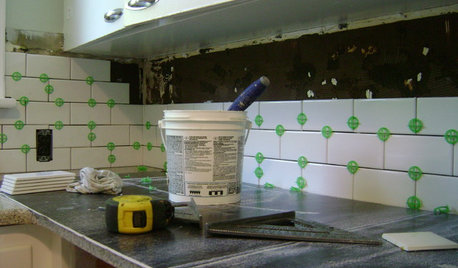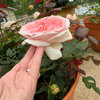Questions about using wettable sulfur spray
gardenerzone4
10 years ago
Related Stories

MATERIALSInsulation Basics: What to Know About Spray Foam
Learn what exactly spray foam is, the pros and cons of using it and why you shouldn’t mess around with installation
Full Story
PAINTINGWhat to Know About Milk Paint and Chalk Paint — and How to Use Them
Learn the pros, cons, cost and more for these two easy-to-use paints that are great for giving furniture a vintage look
Full Story
REMODELING GUIDES9 Hard Questions to Ask When Shopping for Stone
Learn all about stone sizes, cracks, color issues and more so problems don't chip away at your design happiness later
Full Story
GREEN BUILDINGConsidering Concrete Floors? 3 Green-Minded Questions to Ask
Learn what’s in your concrete and about sustainability to make a healthy choice for your home and the earth
Full Story
LIGHTING5 Questions to Ask for the Best Room Lighting
Get your overhead, task and accent lighting right for decorative beauty, less eyestrain and a focus exactly where you want
Full Story
MOST POPULAR19 Kitchen Projects Every Homeowner Should Know About
Could your kitchen use a new sink, a backsplash, updated hardware, better organization, a good cleaning? Here's how to get started
Full Story
CURB APPEAL7 Questions to Help You Pick the Right Front-Yard Fence
Get over the hurdle of choosing a fence design by considering your needs, your home’s architecture and more
Full Story
LANDSCAPE DESIGN7 Questions to Ask Before Laying Stepping Stones
These broken-up pathways invite you to put a spring in your step — while adding functionality to the garden
Full Story
GREAT HOME PROJECTSWhat to Know About Adding a Reclaimed-Wood Wall
Here’s advice on where to put it, how to find and select wood, what it might cost and how to get it done
Full Story
GARDENING GUIDESNew Ways to Think About All That Mulch in the Garden
Before you go making a mountain out of a mulch hill, learn the facts about what your plants and soil really want
Full StoryMore Discussions








nickl
michaelg
Related Professionals
Clemson Landscape Architects & Landscape Designers · Manhattan Beach Landscape Architects & Landscape Designers · New Mexico Landscape Architects & Landscape Designers · North New Hyde Park Landscape Architects & Landscape Designers · Panama City Landscape Architects & Landscape Designers · Waterbury Landscape Contractors · Concord Landscape Contractors · Ellicott City Landscape Contractors · Fort Myers Landscape Contractors · Mashpee Landscape Contractors · Oxnard Landscape Contractors · Paramount Landscape Contractors · San Benito Landscape Contractors · Seven Hills Landscape Contractors · West Palm Beach Landscape Contractorsgardenerzone4Original Author
michaelg
henry_kuska
henry_kuska
michaelg
henry_kuska
henry_kuska
michaelg